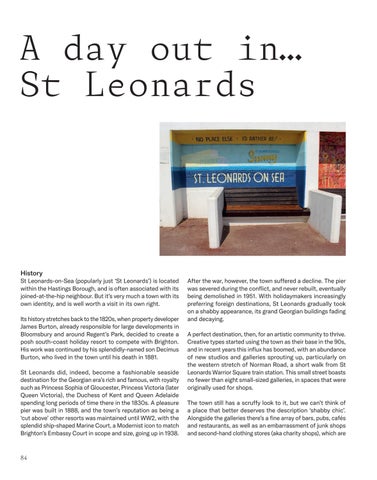A day out in… St Leonards
History
St Leonards-on-Sea (popularly just ‘St Leonards’) is located within the Hastings Borough, and is often associated with its joined-at-the-hip neighbour. But it’s very much a town with its own identity, and is well worth a visit in its own right. Its history stretches back to the 1820s, when property developer James Burton, already responsible for large developments in Bloomsbury and around Regent’s Park, decided to create a posh south-coast holiday resort to compete with Brighton. His work was continued by his splendidly-named son Decimus Burton, who lived in the town until his death in 1881. St Leonards did, indeed, become a fashionable seaside destination for the Georgian era’s rich and famous, with royalty such as Princess Sophia of Gloucester, Princess Victoria (later Queen Victoria), the Duchess of Kent and Queen Adelaide spending long periods of time there in the 1830s. A pleasure pier was built in 1888, and the town’s reputation as being a ‘cut above’ other resorts was maintained until WW2, with the splendid ship-shaped Marine Court, a Modernist icon to match Brighton’s Embassy Court in scope and size, going up in 1938.
84
After the war, however, the town suffered a decline. The pier was severed during the conflict, and never rebuilt, eventually being demolished in 1951. With holidaymakers increasingly preferring foreign destinations, St Leonards gradually took on a shabby appearance, its grand Georgian buildings fading and decaying. A perfect destination, then, for an artistic community to thrive. Creative types started using the town as their base in the 90s, and in recent years this influx has boomed, with an abundance of new studios and galleries sprouting up, particularly on the western stretch of Norman Road, a short walk from St Leonards Warrior Square train station. This small street boasts no fewer than eight small-sized galleries, in spaces that were originally used for shops. The town still has a scruffy look to it, but we can’t think of a place that better deserves the description ‘shabby chic’. Alongside the galleries there’s a fine array of bars, pubs, cafés and restaurants, as well as an embarrassment of junk shops and second-hand clothing stores (aka charity shops), which are













